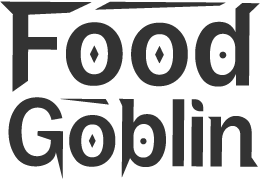Piece by Sofia Gymer, FG Guest Writer
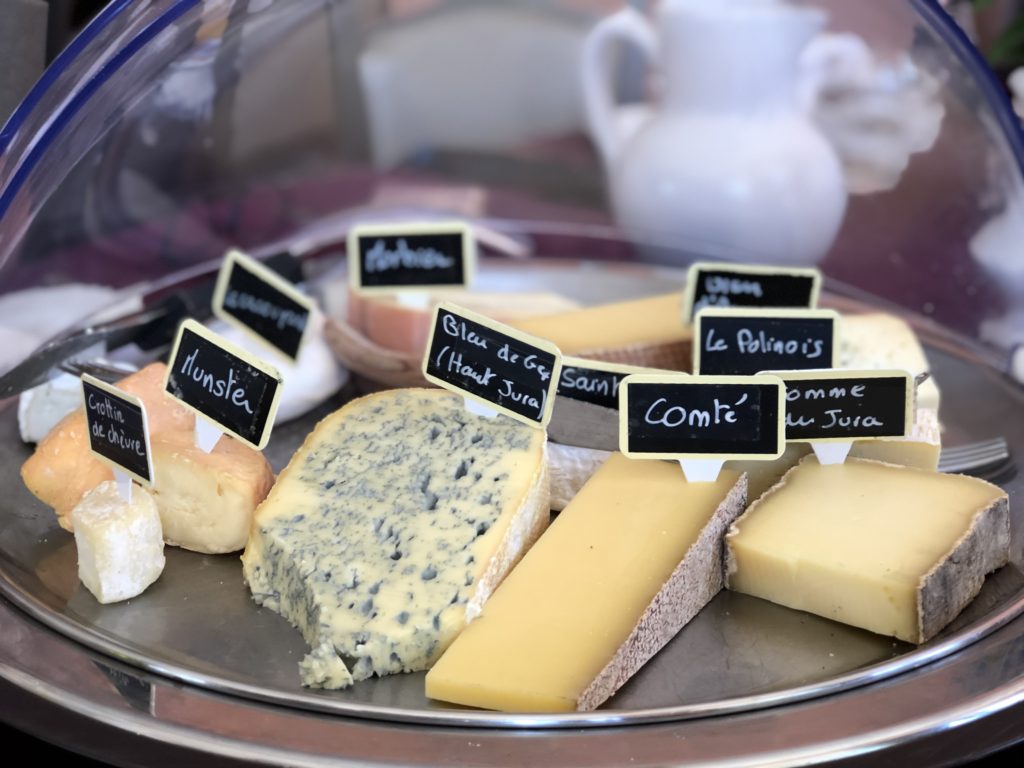
Flying in low over the snowy-capped French Alps, we arrive at Geneva airport. An early morning, instantly worth all lost moments of sleep, for its aerial views of Mont Blanc’s fairytale climes and placid Lake Geneva. We were here to visit the Jura mountains, about an hour North of the Swiss border in the Franche-Comté region and the home of Comté cheese.
My first introduction to Comté was at the oldest wine bar in London, Gordon’s Wine Bar. Here I encountered, curiously, smoked Comté. It is rare for a cheese to etch into one’s memory quite so poignantly, but between the copious amounts of red wine and piles of tiny sausages, I remember it vividly. The brown-buttery taste enhanced by roasted-nut aromas, ending with a sweet and smoky finish is not easy to forget. It’s safe to say I have never looked back, and the thought of spending two days exploring the farm-to-fork (dared I hope farm-to-fondue?) process was exciting.
We drove into the heart of the Haut-Jura Regional Natural Reserve. Past alpine lodges with triangle roofs, glistening lakes and rolling pasture edged with wild flowers – winding down the windows of our van to breathe in the pine-scented air we are starved of in the city. We arrived at a converted farm Les Molunes for lunch, enjoying our first sticks of Comté and local honey flower (Mielefleur) beer outside with views over the surrounding green fields and forests. It was here we met our charming and eccentric guide – a Comté milk producer named Jean-Francois Marmier – who for unexplained reasons, was also known as Taz. He was going to take us to his farm.

Comté is an ancient cheese, representing centuries of heritage for the people of Jura. It is a pressed, cooked cheese that is made with raw milk – which, as Taz explained, is where the magic begins. The pastures in which the cows live are estimated to have 1,500 different types of wild flower species, with up to 200 species existing within 1 metre squared of grass. The biosphere is unique – and all factors from the cows (95% Montbeliarde and 5% French Simmental), through to the soil affects the taste of the cheese. Comté farmers are grouped into cooperatives and aim for high-quality rather than high yields. They respect and maintain the land, with GMO’s being strictly prohibited. The naturally occuring bacteria in the milk are crucial for the development of aroma and taste in the cheese – of which 400 litres is required to produce 1 wheel of Comté weighing 40kg.
At the farm, with Taz speeding ahead on his motorbike – affectionately named the Dark Knight, and which I would later get to take a ride – we have our first introduction to the cows that make this entire industry possible. Any concerns of mass dairy farming and living conditions evaporated, as we rounded the corner to majestic white and brown beasts glowing with health standing with bronze bells ringing in breeze. As they suspiciously observe us, we do our best to get selfies (celfies?) and then we head inside to try our hand at milking and to feed 3 day old baby calves.
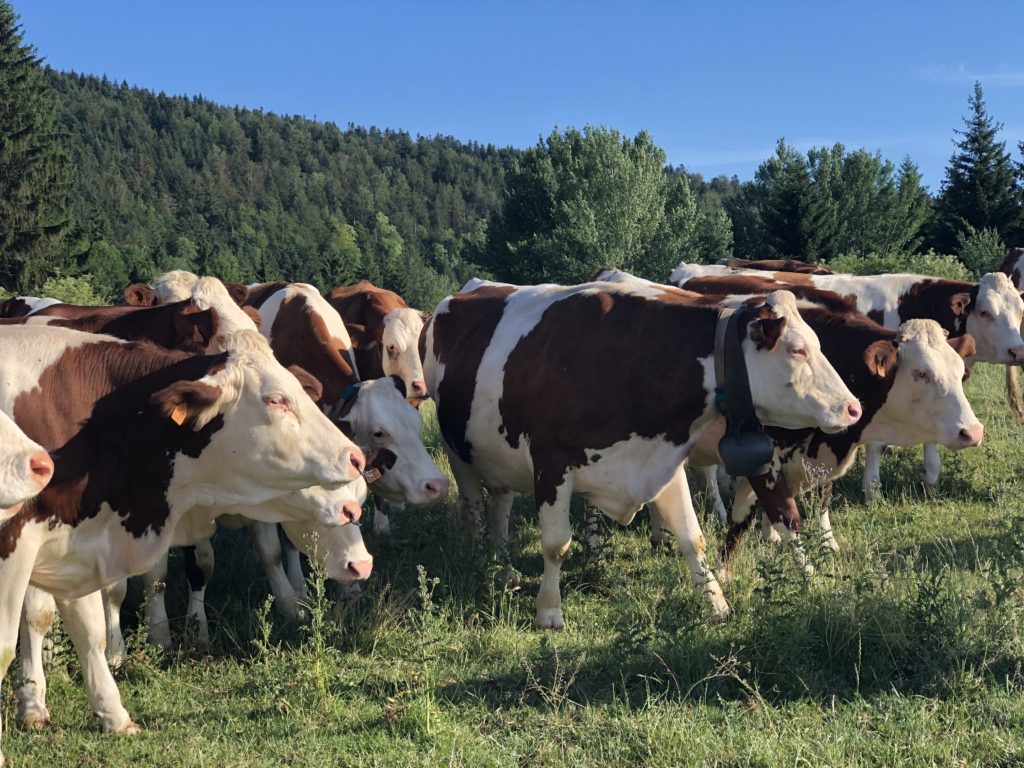
We stayed at a beautiful lakeside hotel and spa, Les Rives Sauvages – which translates as “the wild shores”. 16 suites or apartments, with balconies and a lake view, which with the option to self cater are perfect for couples or families looking to escape for a peaceful countryside retreat. I could imagine staying for a week or four, hiking and rowing in the mountain air.
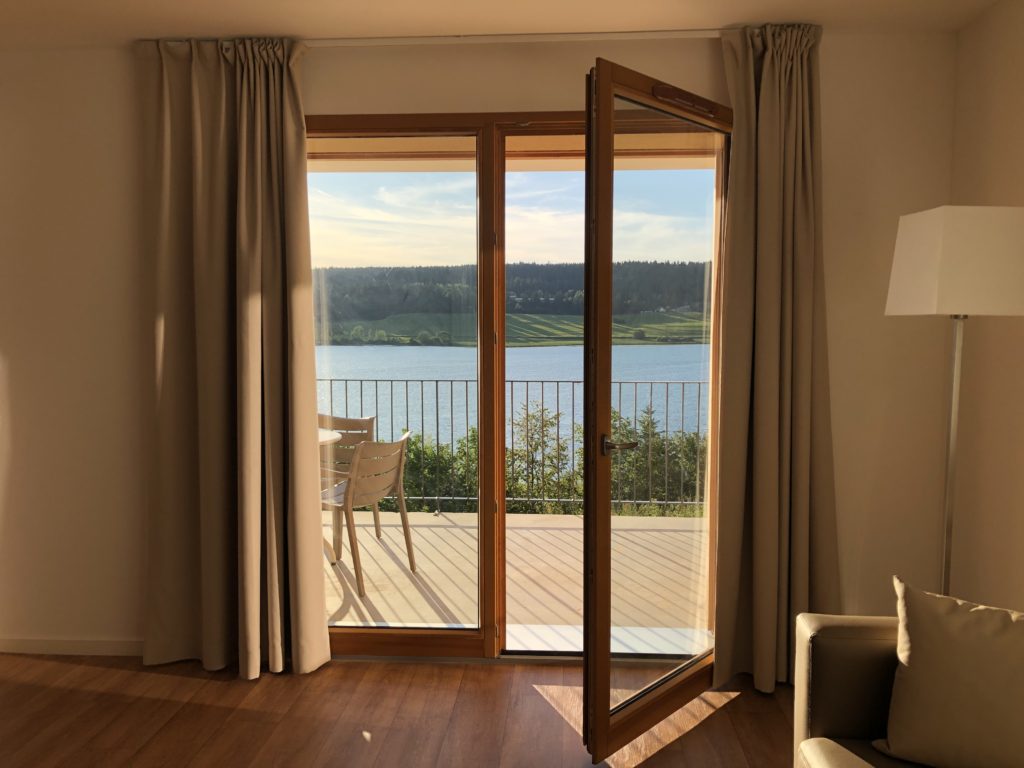
For the evening, we head 5 minutes into the village of Malbuisson to Restaurant du Fromage. A little wooden pannelled hideaway that only holds 50 people, the staff encouraged us to stave of the hunger with tiny pastries and hold on until they appeared with our main course. Yes – it was fondue.
Although during the peak of summer and still around 27 degrees that evening, the mesmerising beauty of a bubbling pot of molten cheese cannot be denied. Served with crusty bread, local charcuterie, potatoes and little pickles, we dove in with our forks. I was informed that there are a number of variations (some include pepper and herbs) but inside, for the classic Jura taste, you should put garlic and the local wine: Vin Jaune. A wine lover myself, Vin Jaune is a fascinating white wine made from the Savagnin grape. During its ageing, the method used means it is allowed to oxidise partially which gives it a characteristically yellow colour and nutty taste.
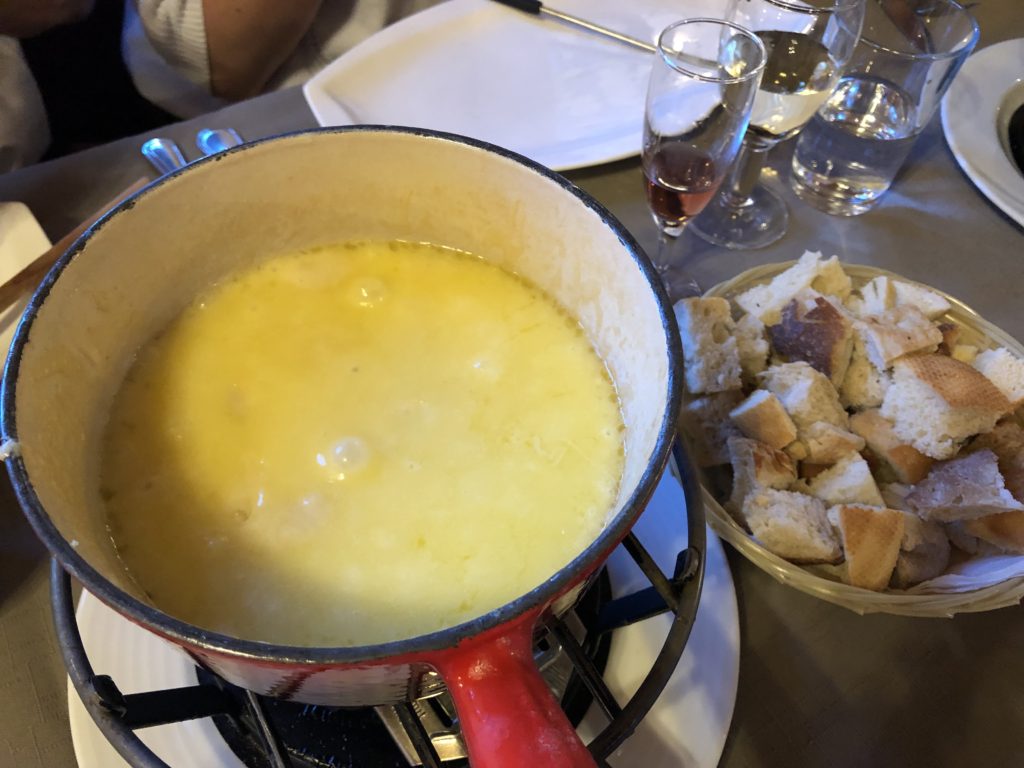
Comté farmers bring their milk to the fruitière – about 80-85% of these are collectively owned by farmers – where the cheese is made. According to the appelation, this must be within a 16 mile radius from the dairy farm. We the next day we visited one built in 1929, that made cheese for the 18 surrounding farms and produces 37 wheels of Comté per day. This involves heating the milk to 56 degrees to serparate the curds and the whey. What was refreshing to learn is that all by products and waste was recyled – with the hot whey used to heat things, cold whey for pigs and all left over cheese was sold to the The Laughing Cow.
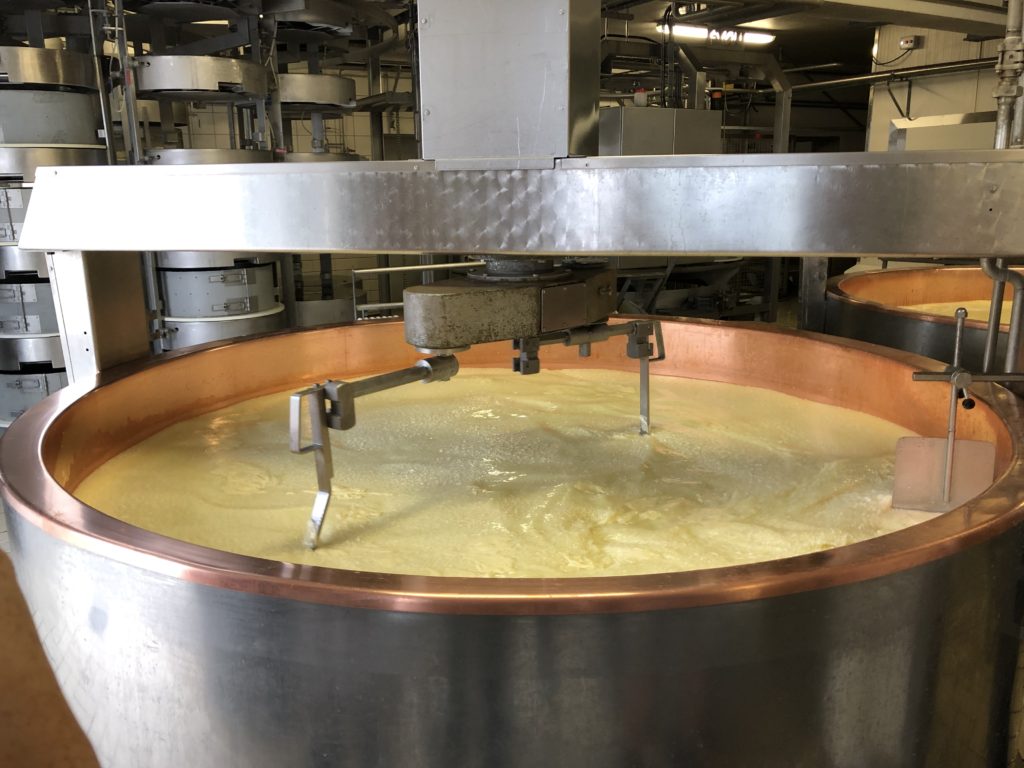
In the words of Taz: “Comté are like babies, they come into this world naked and they must be clothed with rinds”. The rinds are made by repeatedly sprinkling the wheels with salt and basting them with whey over months. Interestingly enough, Comté is a very un-salty cheese at only 0.6% salt that comes from the rind (some cheeses can be up to 2%).
Finally, affinage – the ageing in cellars. On our last day we visited a glorious old fortress Les Rousses, the second largest in France, which was built by Napoleon and used as a military base before being turned into a huge Comté cellar. It now houses about 135,000 wheels all at various stages of ageing. All are aged for a minium of 4 months, and then released at different ages according to to demand. The average age is 8 months, but 12 and 18 months (my personal favourite) also popular.
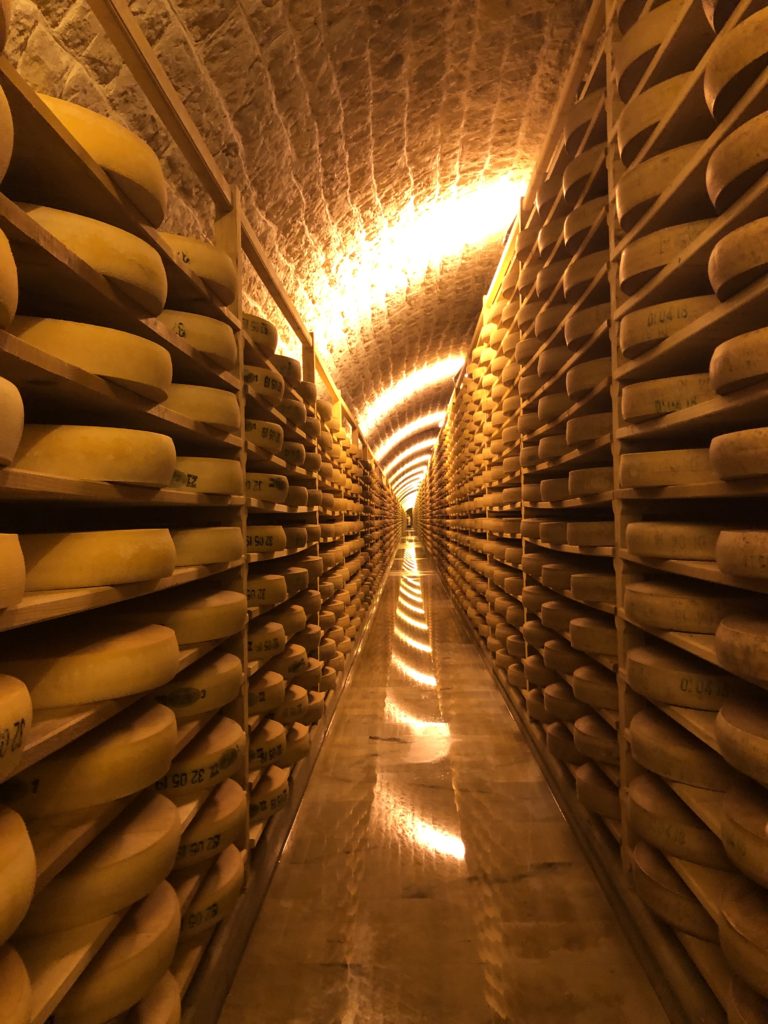
We finished our journey at La Mainaz, which is a must-visit for anyone visiting the region. With panoramic mountain views and using seasonal ingredients from local producers, we were treated to a divine gastronomic meal.

Comté is an aromatic cheese characterised by a great diversity of aromas – there are an astonishing 83 descriptive terms used that can be categorised broadly intor 6 families: lactic, fruity, vegetal, animal and spicy. With this in mind, you can pair it with most dishes – as long as you are clever and don’t use heavy spice. My favourite was a dish we cooked with Chef Marc Faivre at Le Bon Accueil. Melted in thin strips onto a bed of short crust savoury gnocchi, on a bed of leeks and garden peas poached in butter – with a sprinkle of maldon salt and freshly cracked pepper on the top. Simple, but deliberately allowing each element to sing – just like the art of Comté making.
